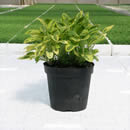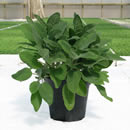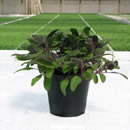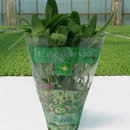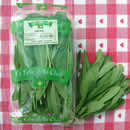Sage
Dill
Absinthe
Basil
Borage
Calamint
Capers
Chervil
Coriander
Tarragon
Chives
Wild fennel
Lavender
Lovage
Lippia Citriodora
Marjoram
Lemon balm
Mint
Myrtle
Oregano
Chilli pepper
Salad burnet
Parsley
Rosemary
Garden rocket
Rue
Sage
Celery
Thyme
Valerian
HISTORICAL HINTS: The name of this plant is a proof of the virtues attributed by the ancient Romans: the term has the same root of the verb “salvare” from the word “salus” (safety but also health). By the Romans sage had to be harvested with a particular ritual, without using any iron tool, wearing a white tunic and with well washed bare feet. Before and after the Roman era, from the Egyptians to the medieval pharmacopeia, sage has always been very appreciated in herbal medicine and not by chance Linnaeus gave it the name officinalis. The Greeks used it to cure ulcers, snake bites, and its infusion was used as a mouth wash and as a tooth cleaner.
THE PLANT - Sage (Salvia Officinalis) is an evergreen aromatic shrub, belonging to the Lamiaceae family with oval lanceolate leaves and very decorative flowers of a blue-purplish colour which can also reach 150 cm of height: initially the stalk is green, from the second year on, it becomes woody. Sage is widespread in all the Mediterranean area and in temperate regions. The sage shrub has thick and oblong leaves, very intense perfume, silver-greenish colour and is covered with soft thin hairs. Leaves can be harvested all the yearlong and can be used fresh or dried, though the best are spring leaves, harvested before the blossoming. Fruits grow at the base of the flowers and contain very small dark brown ovoid seeds. There are some sage species that have almost exclusively a culinary use, others an herbal use. Some species (as salvia divinorum) even contain hallucinogen substances. Finally, many species has decorative purposes as Purpurescens, Aurea, Tricolor and Virdis which are edible anyway.
PROPERTIES - Its name comes from the Latin adjective “salvus” meaning “safe, healthy” and thus indicating that, already in the past times, this herb was appreciated for its medicinal properties: general tonic, antiseptic, antispasmodic, antisudorific, diuretic, it is recommended in case of asthma, mouth throat and airways infections, flue, cold, eczema, ulcers, sores, dermatitis.
In the Middle Age, midwives used sage to help contractions during painful and long deliveries. For this characteristic it is not recommended to pregnant women and during breast feeding because it contains toxic substances as absinthe and it is contraindicated for hypertensive and epileptics people. Sage is believed to enhance memory and be useful for the brain in general; once it was used to relieve from chronic migraine.
The active principles of sage are:
Essential oil (containing thujone, cineole, borneol, linalool, beta-terpineol, beta-clorophylla) with antiseptic properties;
Salvine and picrosalvine (bitter principles acting on gastro-intestinal system);
Cornsolic acids (antioxidant and anti-inflammatory);
Triterpenol as amirina, betuline crategolic acid and ursolic acid;
Fenolic acids which stimulates gall bladder;
Flavonoids with anti-oxidant and estrogenic action.
Sage has different pharmacological properties which have been exploited during the centuries:
Bitter-tonic, antiseptic, digestive, diuretic, balsamic, emmenagogue, spasmodic, hypoglycaemic, estrogenic, and trophic.
Sage splendens and militiorrhiza, beside active principles, produce very interesting compounds:
Leptospermum acid, inhibitor of some tiroxine kinase and of the calcium dependant phospholipase (PKC);
Rosmadial, other PKC inhibitor
Miltirone with anti-tumoral action;
CULINARY USE - Sage is used, together with rosemary, to season roasted meat and escalope. It is very appreciated by chefs because it adds flavour to many dishes even if it should be used in small doses in order not to overwhelm food taste. It is a common aroma for game, soups, veggies, cheese, oil, butter and vinegar. It is also known to have digestive properties for fatty meats and it is also used to fill chickens and turkeys, onions, omelette, and bread. Battered fried sage leaves are a delicacy. We cannot avoid the mention of its perfect matching with melted butter as a sauce for fresh filled pastas (tortellini, ravioli, gnocchi, etc.). Chopped sage is also used in cheese paste, sausages; together with onions it is also added to fillings for pork and poultry.
























